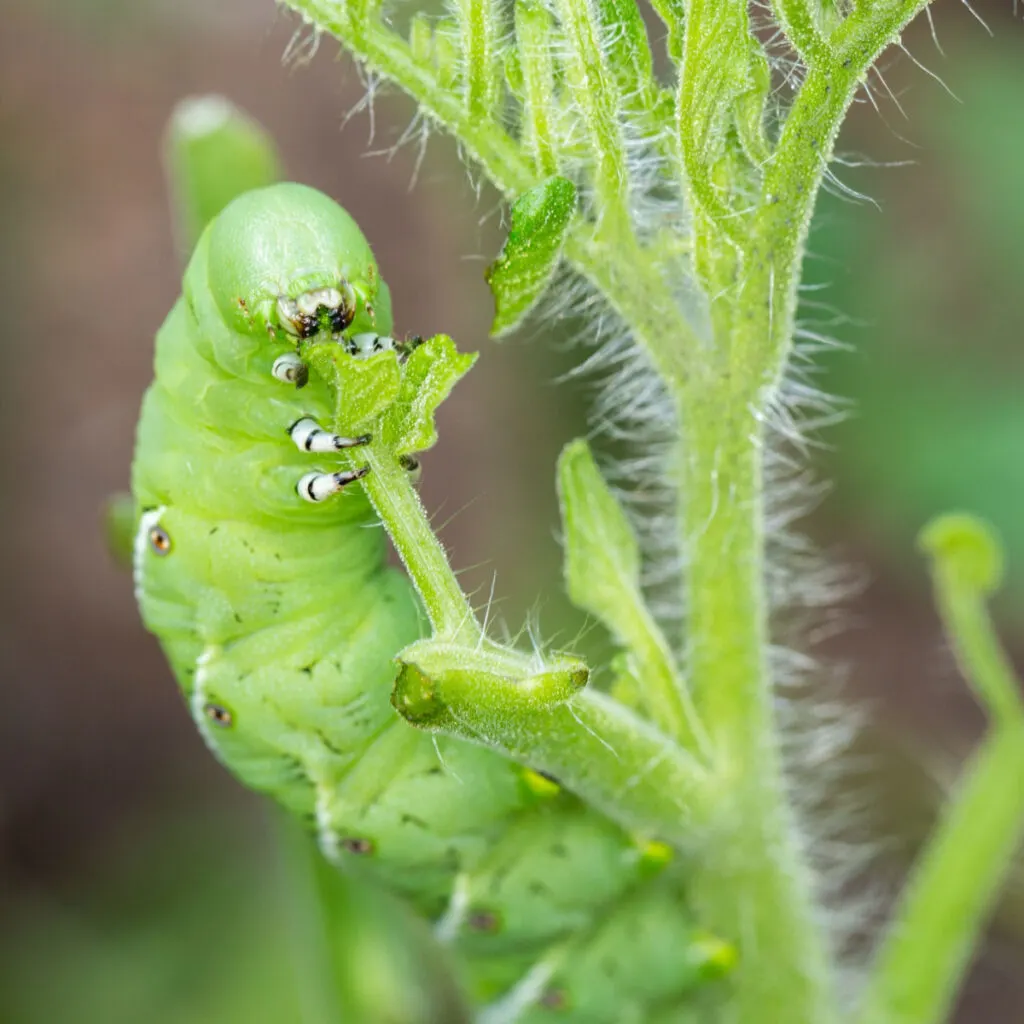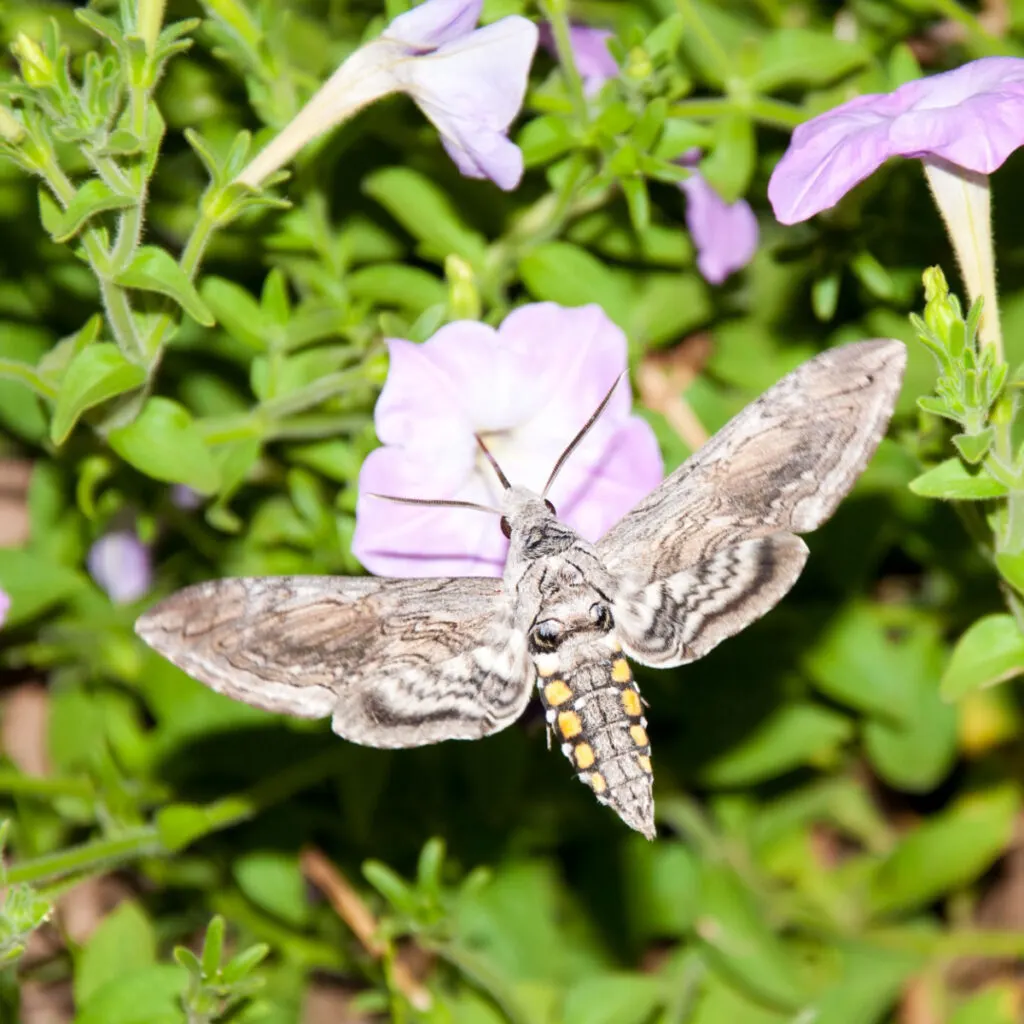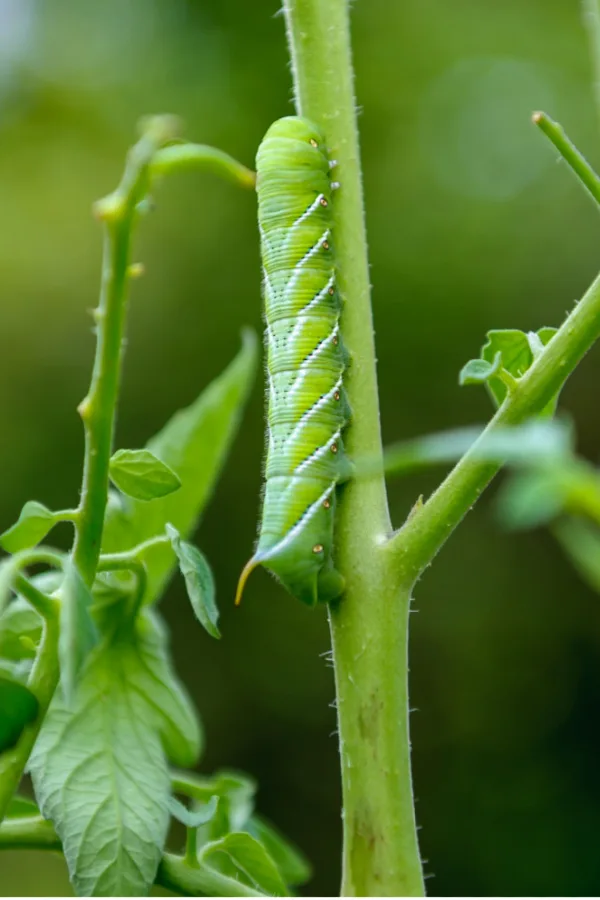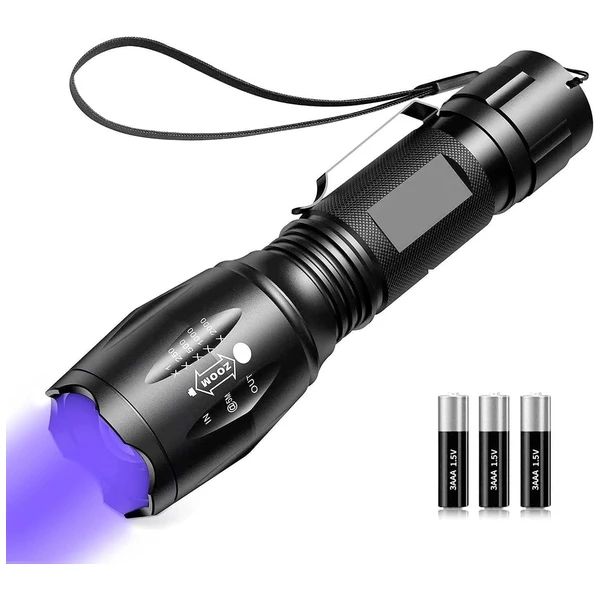Looking for a few great ways to quickly and easily find the tomato hornworms attacking your tomato plants – and save them before it’s too late?
Tomato and tobacco hornworms are notorious for consuming the foliage, stems and even the fruit of tomato plants. As summer hits full stride, the big green worms with little horns start to arrive in full force. And if you are not on the lookout – they can take out your tomato plants in quick fashion!
Unfortunately, hornworms don’t limit their eating to just tomato plants, They also attack and destroy pepper and potato plants as well. In fact, any plant that belongs to the nightshade family is at risk, including eggplant and tomatillo plants as well.

If left unchecked, hornworms can seriously impact a garden’s health and production levels. Much like when aphids or whiteflies attack tomato plants, it can leave the plant weak and vulnerable. See: How To Protect Your Plants From Whiteflies
The more foliage that is stripped from a plant, the harder time it will have recovering to set fruit. And considering hornworms will eat the fruit as well – it’s important to find them quickly, before the damage becomes significant.
The Life Cycle Of A Hornworm – How To Find Tomato Hornworms
As you will see below, finding hornworms can often be quite difficult for gardeners. They have an amazing ability to camouflage themselves on a plant. In fact, quite often, you can be staring directly at one and simply think they are part of your plant!
Knowing how to stop them all begins with understanding their life cycle, and knowing how and when they attack. There are actually two types of common hornworms, the tobacco hornworm, and the tomato hornworm.
Tobacco hornworms have a small red spike protruding from the top of their body and 7 white stripes. Tomato hornworms, on the other hand, have a brown spike on top and 8 stripes. Unfortunately, both varieties will consume tomato and other nightshade plants.

How Hornworms Arrive On Your Plants – How To Quickly Find Tomato Hornworms
Hornworms begin their life cycle as a moth emerging from a pupa state from the ground in early spring. The moths are magnificently large creatures and are incredibly adept at flying. So adept that they are sometimes confused as a hummingbird. Like hummingbirds, they are equally impossible to catch.
Once they emerge, the hornworm moth feeds on the nectar of flowering plants. As they feed, they also deposit tiny eggs on the foliage of young, tender vegetable plants. Not long after that, the damage for gardeners and their tomato plants begins in earnest.
Once laid, hornworm eggs usually hatch within three to four days into a caterpillar (hornworm). Making matters worse, not only does the egg laying cycle occur in late spring/early summer, it can also happen a few more times later in the summer as well.
Finding the eggs can be quite difficult. Not only are they green and small, they are nearly translucent, which makes them even harder to spot. When you add in that tomato plants usually have thick foliage, looking for and removing the eggs first is just not a viable option for keeping plants safe. One thing is for sure, if you do happen to notice eggs – remove them!

How To Find Tomato Hornworms On Plant
The Keys To Spotting and Stopping Tomato Hornworms
The single most important factor to keep your plants safe from hornworms is to be proactive. Daily patrols of your garden to look for damage and signs is the real key to stopping tomato hornworms.
An adult hornworm can and will devour large portions of a plant in a single day, but if you can find them when they first start to grow and remove them, damage will be minimal. Allow them to get bigger, and they will defoliate your plants with lightening speed.
There are three simple and effective ways to look for and find tomato hornworms. Two can be accomplished during daylight hours, while the third option, using a black light, needs to be performed in the dark. Let’s first cover the daylight options – spotting hornworm manure and spotting hornworm damage.
Looking For Manure – How To Find Tomato Hornworms
The best and easiest way to find and stop tomato hornworms early is to look for their manure on the leaves of plants. Small hornworms with small manure can usually be found a day or so before you will start to see significant damage to your plants.

As you walk your tomato plants, pay careful attention to the foliage for small green lumps of hornworm manure. When hornworms are small, the manure will be tiny in size, almost like grains of green sand. As a hornworm grows, the manure grows too.
Adult hornworms can leave behind manure that will look like tiny round rocks anywhere from 1/8″ to even a 1/4″ in diameter. If they are green, they are fresh and the hornworm will be nearby. If the pebbles are brown, it’s older manure and the hornworm is likely far away on the plant.
When you spot the green manure, scan the nearby branches and leaves. Start by looking in the limbs directly above and you are likely to find a tomato hornworm lurking. It takes some practice, but once you start looking for manure and the worms above – you will be amazed at how quickly you can find them!
Spotting Hornworm Damage – How To Find Tomato Hornworms
While you walk your plants, also look for the presence of any hornworm damage. Hornworms will chew and strip the limbs and foliage. If you spot only nubs of a branch, there is likely a hornworm nearby.
Small hornworms will chew tender leaves. You can usually find them right at the base of a stem and leaf joint. The small hornworms are the most difficult to locate, but if you can remove them early, they really can’t cause much damage to your plants.

Although adult hornworms can reach lengths of up to four inches, they can still be hard to spot too. Their body is perfectly camouflaged to blend in with the green foliage, and they seem to become one with the plants.
When you spot large limbs that have been gnawed off, a large hornworm is going to be nearby. Again, look at the joints and them major stems near leaves. Quite often, they will be perch there, blending in perfectly with the surrounding foliage.
The Black Light Method – How To Find Tomato Hornworms
Another great method for finding hornworms involves the simple use of a black light at night. The body of a hornworm is translucent. The stems, leaves and fruit of a tomato are not.
Because of this, by shining a black light on your plants, hornworms will glow bright green under a black light. This same method also works incredibly well for locating scorpions that might be lurking around if you happen to live in an area where they are present.
Simply stroll through your plants in the evening after the sun has set with an inexpensive black light flashlight. As you shine the light on your plants, the hornworms will light up, making them easy to spot and remove. (Product Link : Letion UV LED Blacklight)

It is actually quite an efficient way to look for and eliminate tomato hornworms – especially if you are having trouble finding their camouflaged bodies during the day!
Hornworms & Paper Wasps – How To Find Tomato Hornworms
During your daily strolls looking for hornworms, if you happen to come across a hornworm with white eggs on its back, you are in luck. In spite of what many think, these are not the eggs of the hornworm. Instead, they are the eggs of a paper wasp, which is actually quite beneficial in the fight against hornworms.
Braconid, or common paper wasps deposit their eggs on the back of hornworms. As it turns out, they do this because the eggs and young wasps can feed from the hornworm. Eventually, this results in the death of the hornworm.
Wasps are truly a big help for tomato growers. Not only do they help keep your plants safe from hornworms, they are also one of the biggest aids for pollinating tomato plants. It’s just one more reason leaving a few of those paper wasp nests around can really help your harvest!
Here is to finding and getting rid of the tomato hornworms in your garden this year – and to protecting your harvest!
Follow Our Facebook Page For Great Gardening Tips And Advice! This Is My Garden Facebook Page
This Is My Garden is a garden website created by gardeners, for gardeners. Jim and Mary Competti have been writing gardening, DIY and recipe articles and books and speaking for over 15 years from their 46 acre Ohio farm. They publish three articles every week, 52 weeks a year. Sign up today to follow via email, or follow along!
